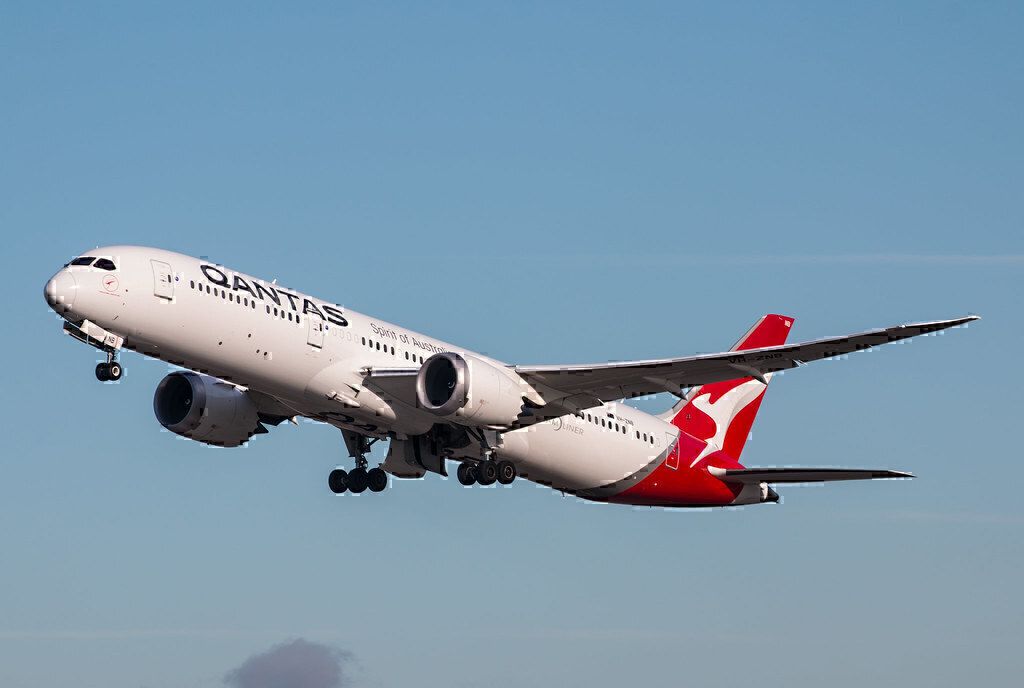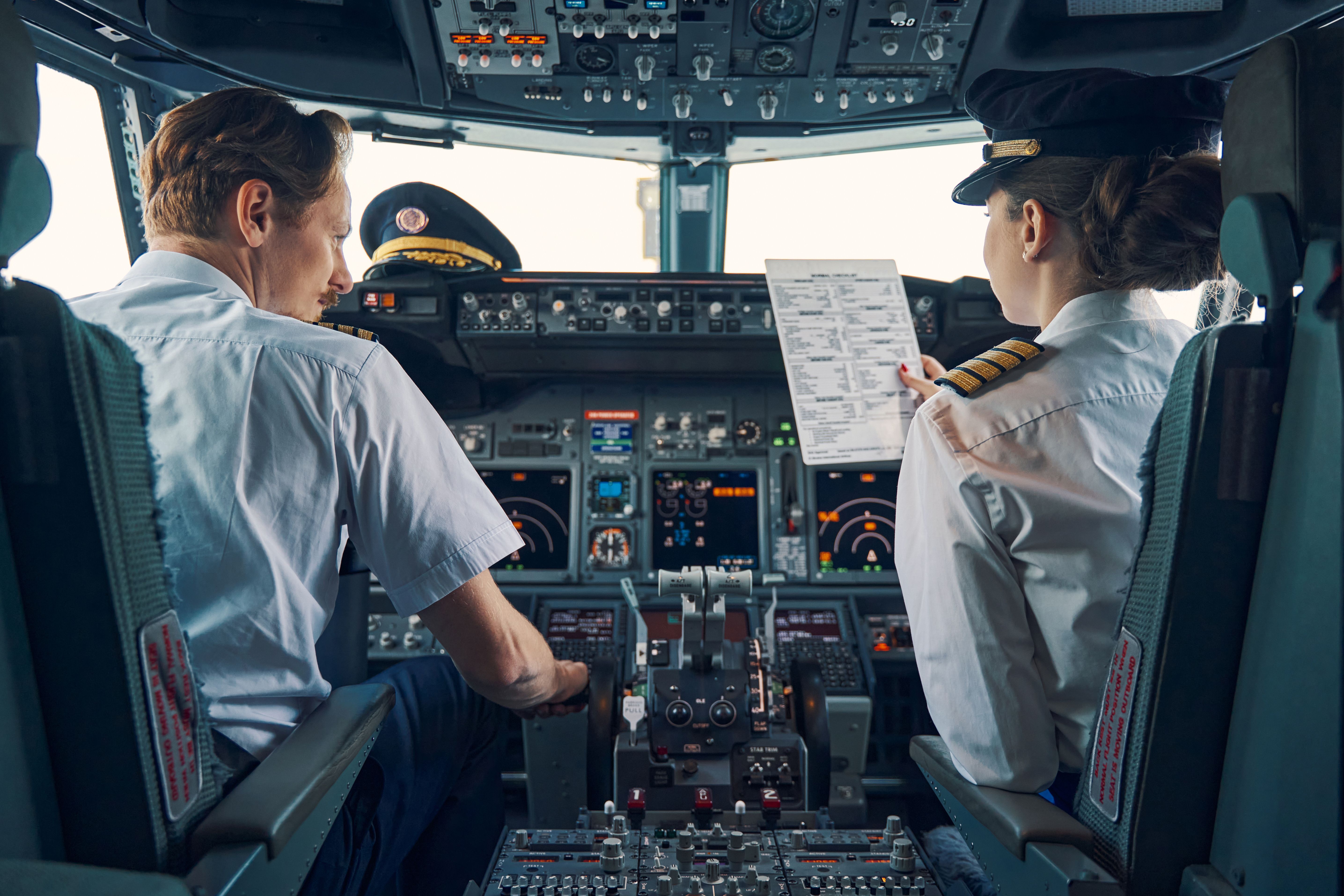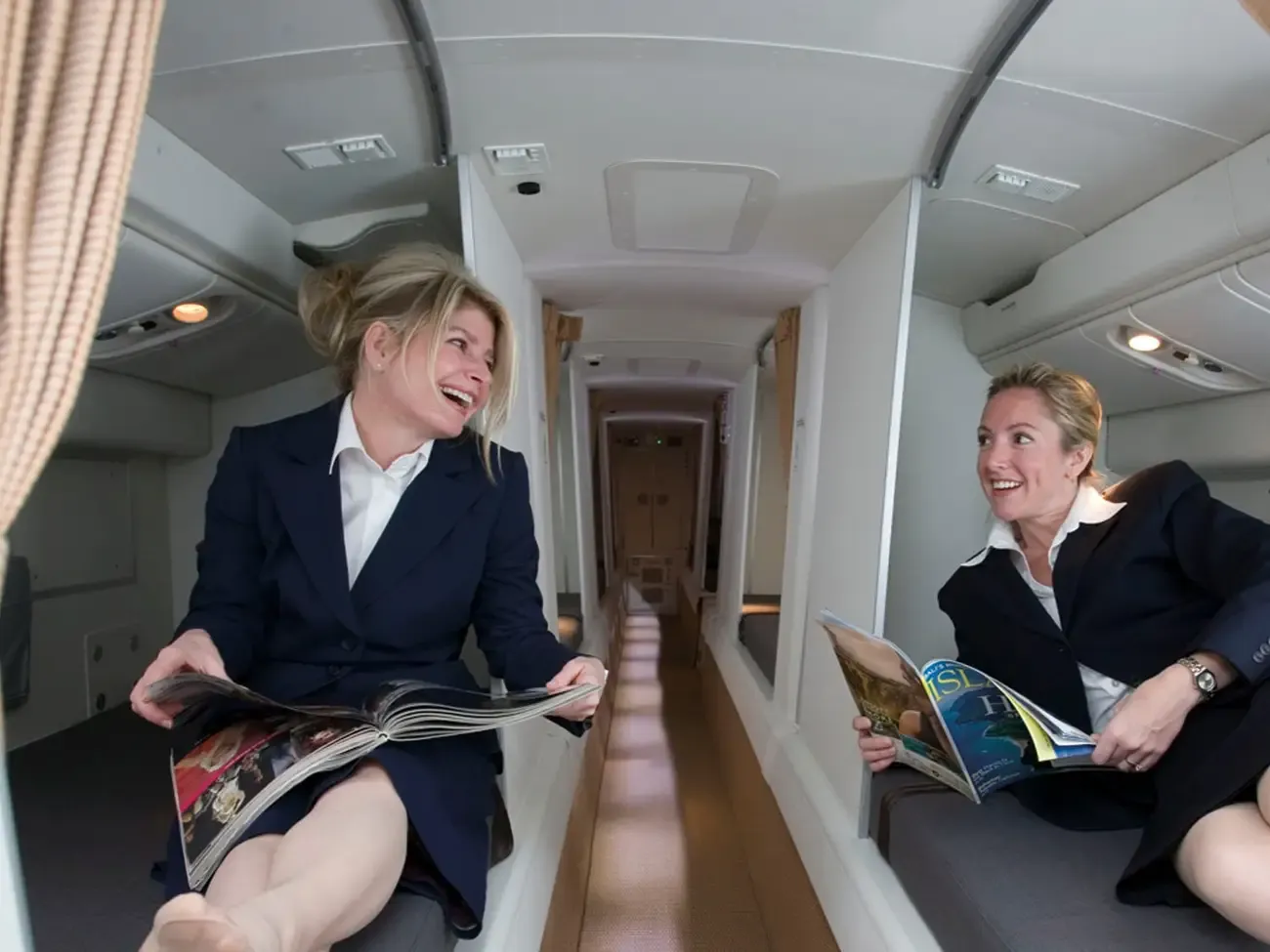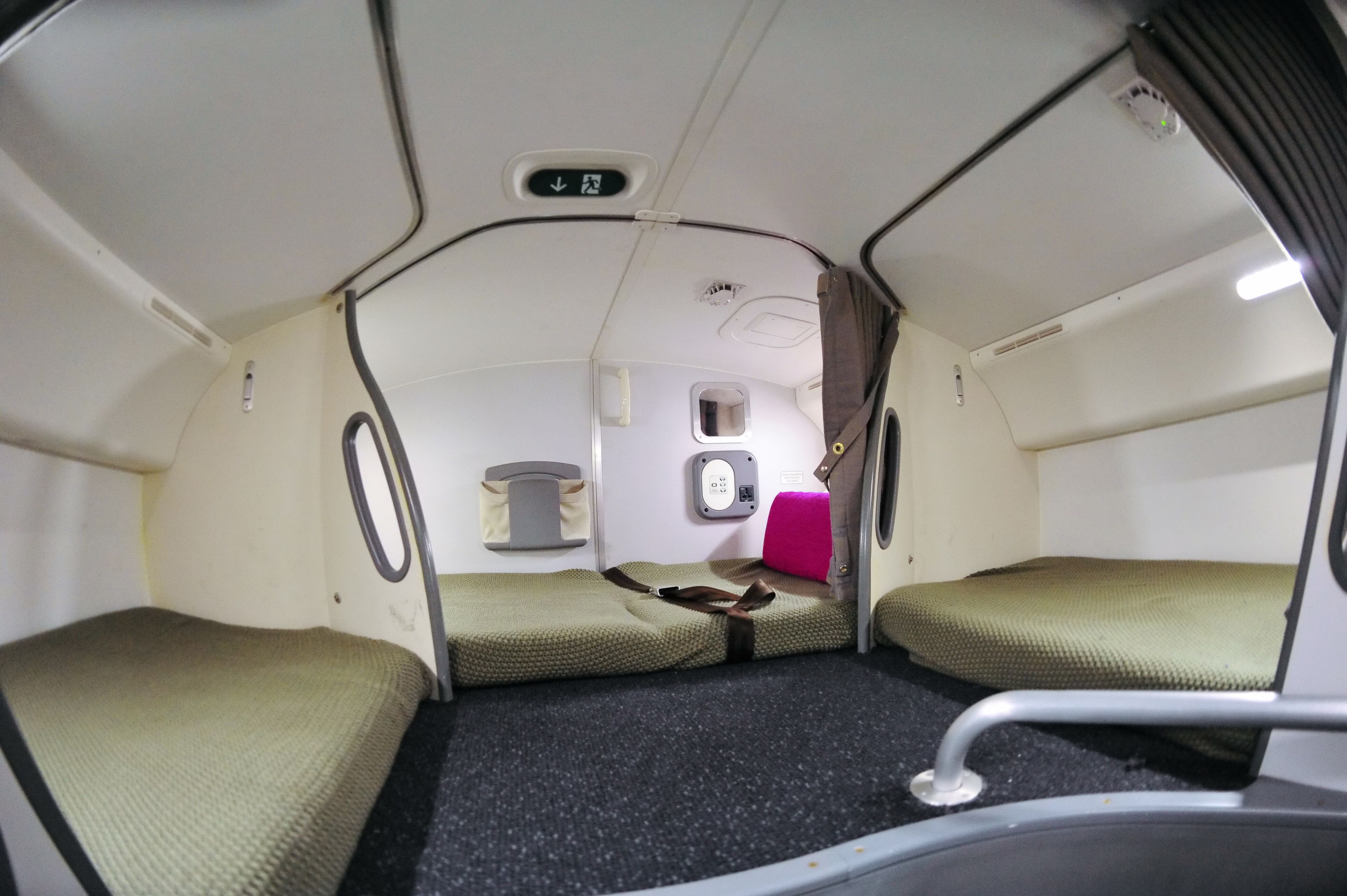Summary
- Airlines ensure crew safety and well-being on long-haul flights, with two pilots and enough cabin crew to split shifts.
- Pilot rest requirements have been updated to include 10 hours of rest before a flight and the opportunity for 8 hours of uninterrupted sleep.
- Long-haul flights require multiple pilots, with flight times extended when more pilots are present.
Have you ever wondered what measures airlines use to ensure their crew successfully manages long-haul flights? Long-haul flights are typically those which are upwards of seven hours in flight time. From crew rotation to pilot rest requirements, we examine how airlines fly long-haul.
How many people keep a plane flying?
The answer to this question depends on the flight. Different services require different numbers of crew and different rotas. But there will always be two pilots on any flight, often more for long-haul missions. There will also be enough cabin crew to split shifts, ensuring that no individual completes more than 14 hours in the cabin.
Scheduling long-haul is a delicate balance between making the flight cost-effective and maintaining requirements in terms of crew time and safety. The situation is set to get even more complicated as we progress through the 2020s, with Qantas planning its ultra-long-haul Project Sunrise flights and the A321XLR bringing long-haul requirements to narrowbody operations.
Keeping pilots in check
Let's start with one of the most significant changes in the 21st century for airplane pilots. In 2011, The FAA (Federal Aviation Authority) changed its policy on pilot rest requirements and fitness for duty. It ensured the wording of its policy was clearer and updated regarding maximum flight hours and opportunities for uninterrupted rest.
The regulations dictate that pilots need 10 hours of rest before their flight, with the opportunity for eight hours of uninterrupted sleep within that time. Pilots must also sign a form before they fly to say they are fit for duty. It suggests that while measures are in place to protect pilots, the ultimate onus lies with the individual.
Reserve pilots also operate under a 10-hour rest rule, whereas before, they only needed a rest of 24 hours in 7 days. These rules for both serving and reserve pilots apply to all international, domestic and unscheduled flights in the US.
Singapore Airlines takes its pilots' rest requirements very seriously. The airline told us:
"In addition to rest days, cabin crew and pilots are given in-flight rest on longer flights. The in-flight rest periods exceed mandatory requirements stipulated by the Civil Aviation Authority of Singapore ... Regular communication with our flying crew allows the Company to share tips and recommendations on fatigue management. To facilitate this, Singapore Airlines is currently exploring the development of a fatigue management app for flying crew."
How long can pilots work?
In the US, pilots can fly a maximum of 60 hours in a 168-hour-long period (defined as one week). Within 365 days, not more than 1,000 flight hours can be logged. Those same rules also apply to European pilots.
Consequently, long-haul flights require multiple pilots as well as crew. And with the rise of ultra-long-haul flights, that becomes even more essential.
Maximum flight times for pilots depend on the scheduled time of their first flight. If a pilot's first flight is between 5 am and 7.59 pm, the pilot can fly for a maximum of nine hours if they are the only pilot on the flight. If the flight is outside those hours, the maximum flight time is eight hours. But when more pilots are on a flight, flight time is increased.
With three pilots, flight time can be 13 hours and up to 17 hours with four pilots. That means that on long-haul flights of this duration, pilots will rotate to cover the flight time.
How do they get some rest?
When it comes to pilots taking their rest, their quarters are always separate from the Crew Rest Compartments. The rest areas are used in shifts and normally are kitted out with business class luxuries.
And the reason for this, above all, is safety.
Crew rest areas are either above or below passengers where space would normally not be used. Again, the rest areas are used in shifts. It's common for cabin crew staff to swap halfway through the flight to catch some rest.
Let us know your long-haul stories in the comments.




